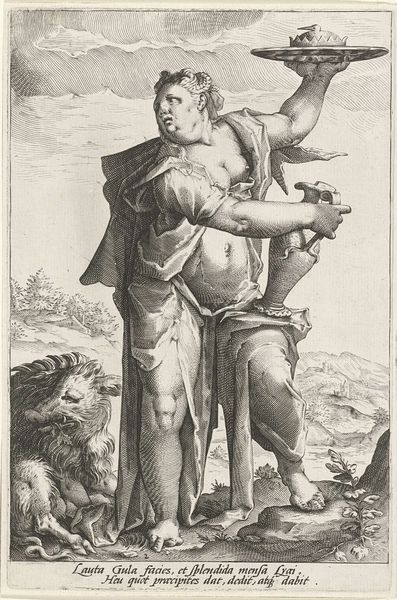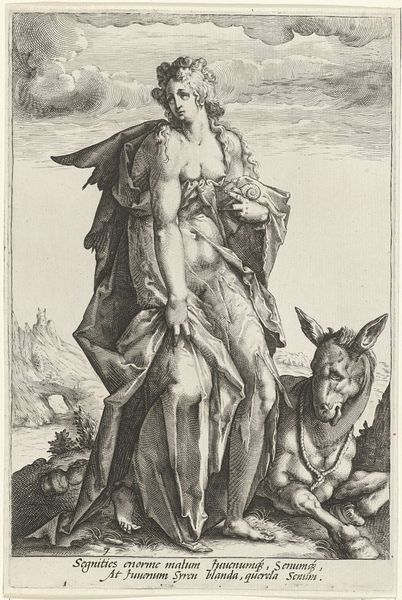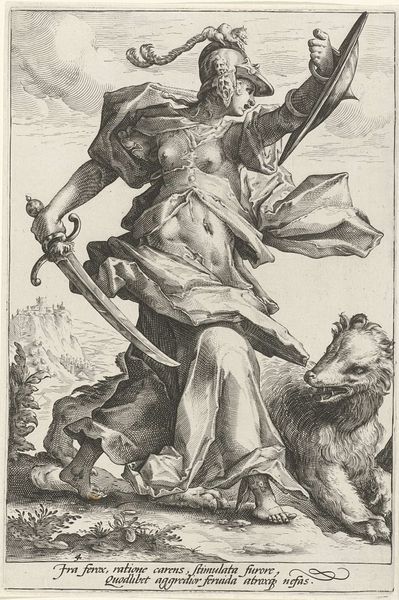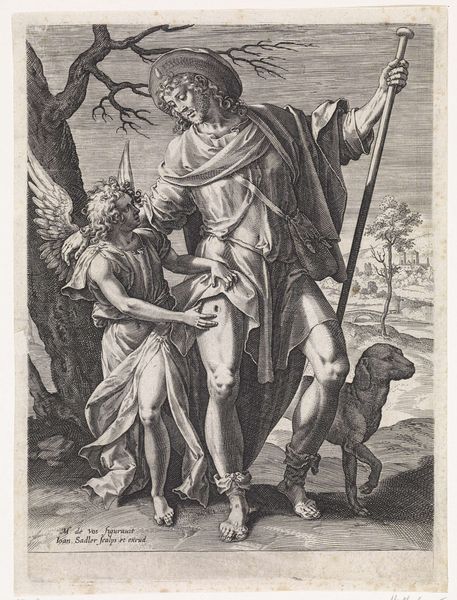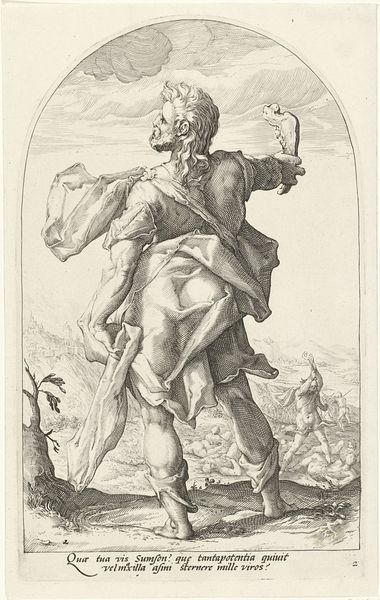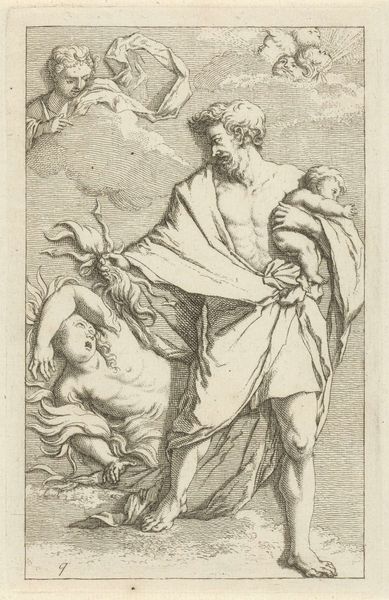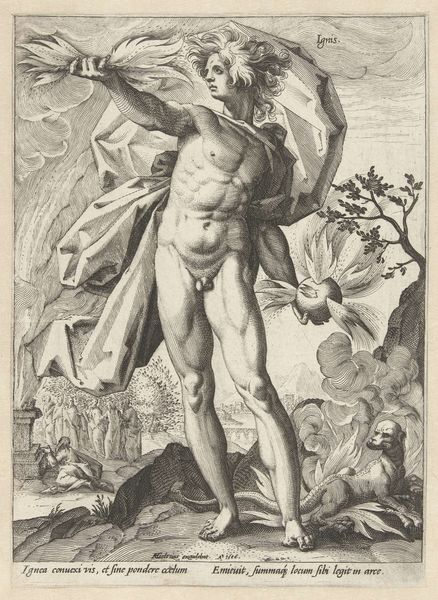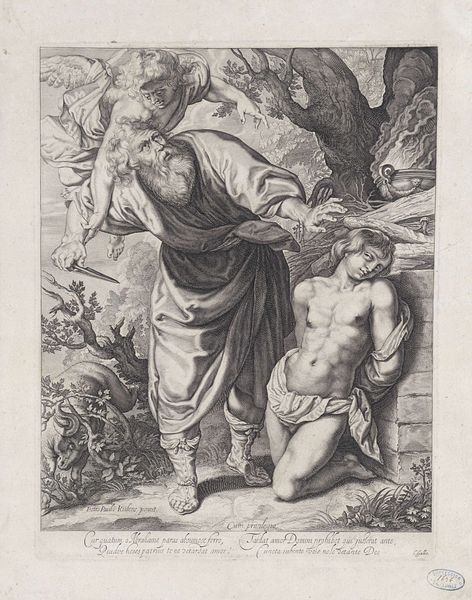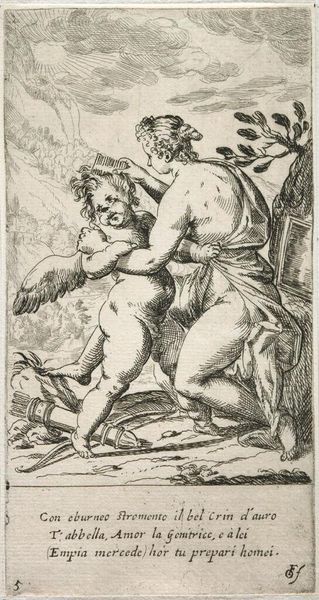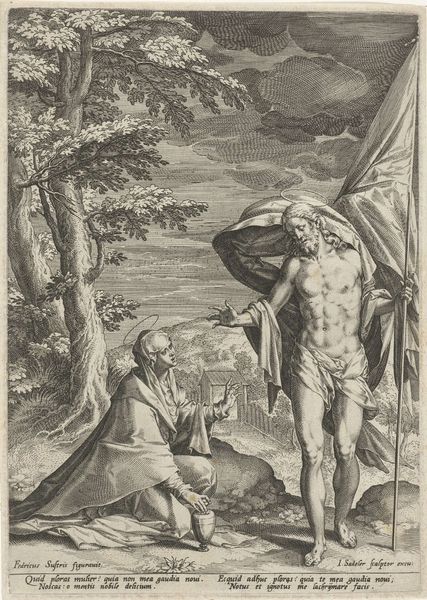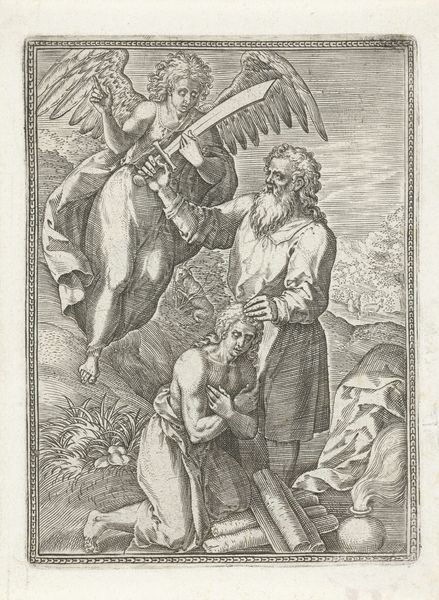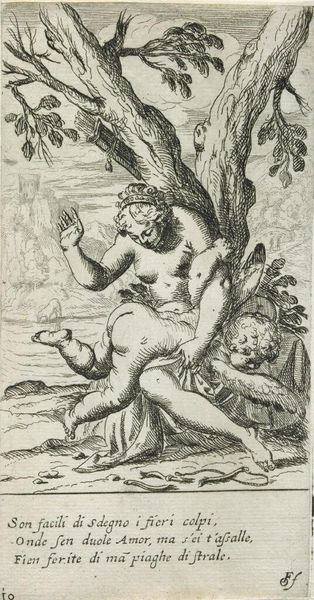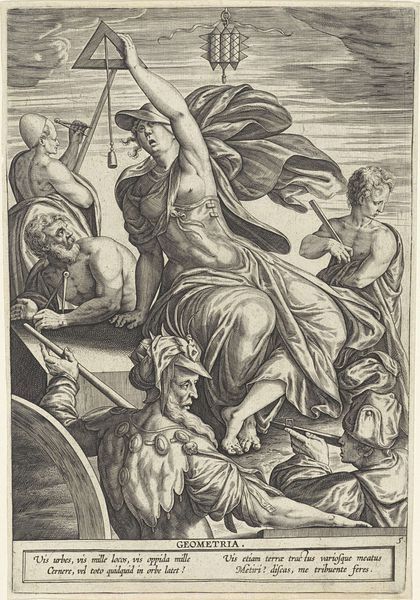
engraving
#
allegory
#
mannerism
#
figuration
#
form
#
line
#
history-painting
#
nude
#
engraving
Dimensions: height 216 mm, width 144 mm
Copyright: Rijks Museum: Open Domain
Curator: Let's examine "Afgunst (Invidia)," an engraving created by Jacob Matham between 1585 and 1589, now residing here at the Rijksmuseum. What are your initial impressions? Editor: My eye is immediately drawn to the textures. The way Matham has rendered the scales of the snakes, the drape of the fabric, the rough fur of the dog, all achieved through meticulous line work... it speaks volumes about the printmaking process. Curator: Indeed. Consider how Matham, working in the Mannerist style, employs allegory here. The central figure embodies envy. She's a grotesque nude, snakes for hair, chewing on an apple – perhaps alluding to a corrupted Eden. Her sickly pallor could represent a poisoned body, due to poisonous thoughts and attitudes, even towards one's self. Note that she has a menacing look and that the hand she keeps raised contains a threatening viper. Editor: And the material implications of the viper—the acquisition of poison, it's extraction, storage, delivery—they all represent specific craft knowledge passed down among people and classes and professions and craft guilds! Envy requires specialized means! I am always fascinated by these material supply chains in these artworks! Curator: And how it intersects with class, right? Because it does! Absolutely. The engraving style itself also adds to this tension, doesn't it? This method relies on reproducible images. Editor: Precisely. And we shouldn't overlook the paper itself. Paper production in that era involved intense labor, the sourcing of raw materials, and the economics of printing and distribution. Matham’s work wouldn’t exist without a network of material conditions. Curator: I'm intrigued by the dog by her side, perhaps signifying loyalty perverted or corrupted by the emotion, always near to us in society but somehow dangerous too, loyal to evil deeds. I'm reminded of modern explorations of envy in cinema or the written word and how it manifests itself among certain cult-like followings or even corporate spaces. How applicable is such art to contemporary struggles in that arena? How easily translatable are Jacob's artistic techniques to this conversation and new techniques? Editor: The scale of this thing, even, it's small in comparison to a full painting, allowing it to circulate readily; creating the conditions for how widespread "evil intentions" are proliferated across the societal spectrum. It also creates a strange kind of "accessibility" due to how cheap printing on paper actually is to acquire versus say, other forms of artwork from the time. That said, despite the scale, his skillful depiction really speaks volumes. Curator: Indeed. A potent reminder that the narratives of power and emotion are embedded within the very fabric of our society, both thematically and through production and presentation. Editor: An allegory not merely represented but materially enacted through its means of creation. Thank you.
Comments
No comments
Be the first to comment and join the conversation on the ultimate creative platform.
